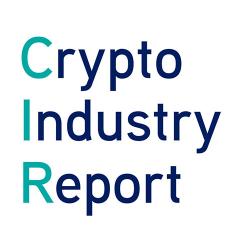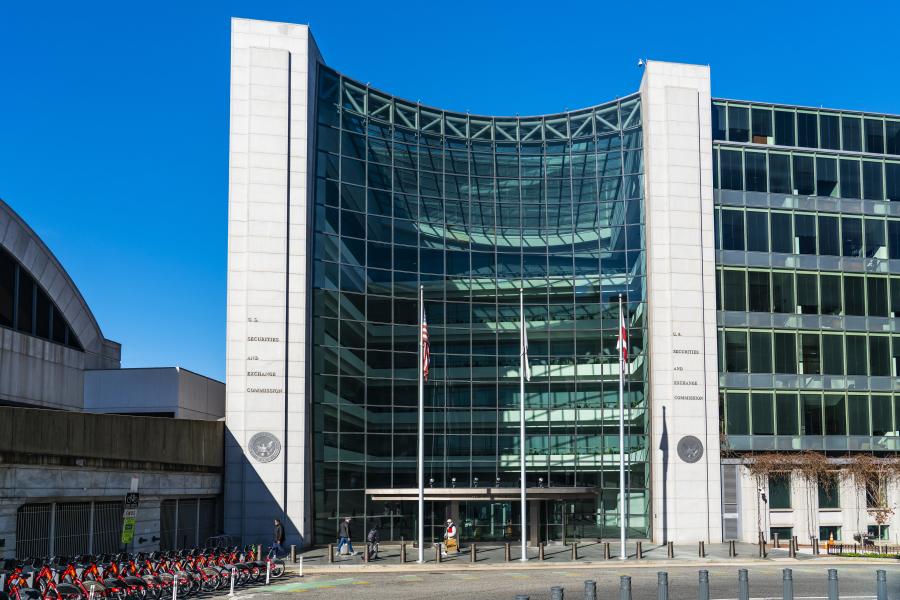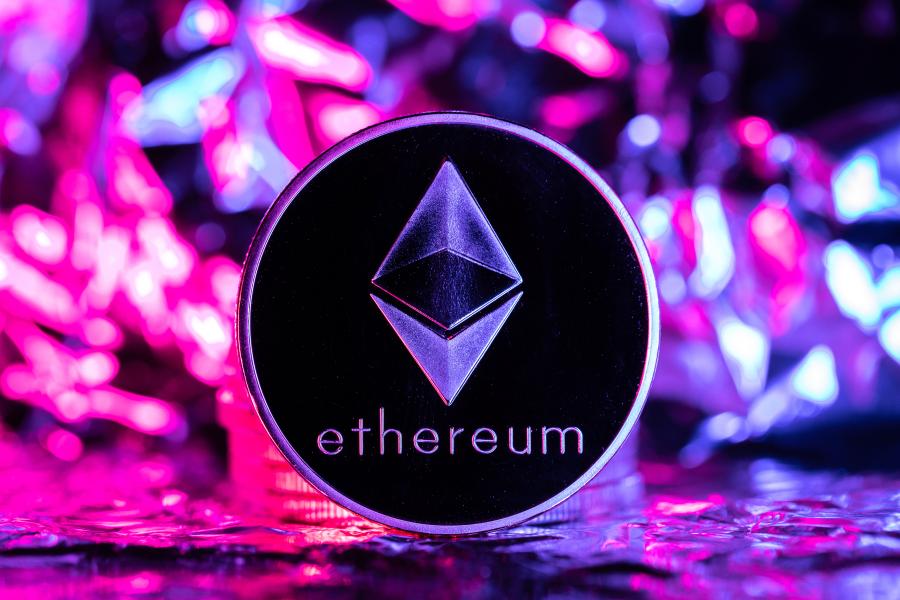How decentralised is Decentralised Finance really?
This week, our blockchain experts assessed the following topics:
- How decentralised is Decentralised Finance really?
- A tale of two crypto hacks and their enlightening stories
- Buying Bitcoin without KYC is getting harder and harder
- A huge step forward regarding tokenised assets
- Market Update: Alternative crypto projects are picking up speed
Our bi-weekly Crypto Industry Report provides you with valuable information on the global crypto industry – picked and analysed by our blockchain experts.
How decentralised is Decentralised Finance really?
The world of decentralised finance continues to pose quite a challenge when it comes to regulation. After all, who is to be regulated? Given that decentralised applications (DApps) are supposed to have no central, controlling entity, there’s hardly any clarity around who is responsible for ensuring decentralised finance applications adhere to existing regulatory requirements. At the same time, regulating decentralised products without completely removing their core attributes does not make sense either. So, are regulators at a stalemate?
SEC’s chairman, Gary Gensler, does not think so. The head of the US Securities and Exchange Commission has stated that his agency could be regulating decentralised finance projects soon. With many DeFi projects, participants are rewarded with valuable tokens and other incentives. Such incentivisation schemes resemble securities, which is why they would need to be regulated accordingly.
Admins have a lot of power
Gensler alluded to the fact that many decentralised finance protocols are not merely run by selfless, non-financially motivated developers. Programmers and protocol stewards oftentimes act more like entrepreneurs that profit from advancing a respective protocol. At the same time, it is not uncommon for DeFi developers to have admin keys, giving them a disproportionate amount of power over the protocol. In certain other types of smart contracts, administrators can insert provisions into the code of their smart contracts, so they can be upgraded, terminated, or deprecated. This goes to show that decentralised finance is not necessarily as decentralised as one would think.
A tale of two crypto hacks and their enlightening stories
In August the crypto world experienced two more significant hacks. In a hack happening on the Poly Network, an interoperability solution, up to 600 million US dollars were obtained. Soon thereafter, another 90 million US dollar in crypto asset funds were stolen from Japanese crypto exchange liquid. The two hacks are particularly significant as the events surrounding the hacks display two different realities.
In the first hack, almost the entire amount of money has been returned to Poly Network by the hackers. As the latter indicated, they were never keen on really stealing the money but carried out the hack for the pleasure of it. Some speculated that the hacker did return the money because they figured out that it would be of no use. After all, because of crypto’s transparency, addresses the hacker used were able to be flagged. At the same time, stablecoins like US Tether were even blacklisted and frozen. While this is a fist in the face of decentralisation, it goes to show that hackers do have a hard time turning a profit from hacking crypto protocols.
Do they really? As the second hack mentioned so far indicates, hackers have not returned any funds. Although many of their funds still lie idle on addresses, because of the hackers’ speed, they managed to swap some XRP for Bitcoin and withdraw them for example. Although different exchanges and block explorer like Etherscan are making sure addresses that have been reported to be involved in the Liquid hack are indicated as such, some funds were sent to mixer services to cover up the tracks. Only time will tell how effective this hack will have really been.
One layer of security might not be enough
Another interesting question that the Liquid hack brought to light: Can a crypto wallet ever be 100% safe? Funds were stolen from so-called multiparty computation systems of custody (MPC). So although such an MPC makes sure that private keys controlling the funds are generated collectively by a set of different parties, the setup exposed to be vulnerable nevertheless. Some commentating the happenings argue that an MPC setup alone is not enough. More layers of security like cold vaults for example need to be applied.
Buying Bitcoin without KYC is getting harder and harder
Switzerland has grown a reputation when it comes to financial privacy mainly because of its historically favourable bank secrecy laws. Banking secrecy has been severely on its retreat ever since, and the crypto world is also experiencing increasingly deteriorating terms when it comes to KYC-less cryptocurrency buying.
Back in 2020, the Swiss Financial Market Supervisory Authority (Finma) introduced new legislation by the name GvW-Finma article 51a. In this passage, the previous amount of a KYC-less cryptocurrency purchase was reduced from 5,000 to 1,000 Swiss Francs per transaction. When this new law was originally past, some actors within Switzerland’s crypto ecosystem called out the Finma for applying a non-neutral stance on technology since the limit for traditional (fiat) currencies was left at 5,000 Swiss Francs. Interestingly, with assets like physical gold, the upper bound is even at 15,000 Swiss Francs.
So, while there was some pushback from the industry itself, the Finma was not impressed. On the contrary. Just recently a new directive was put forth that would reduce the limit from 1’000 Swiss Francs per transaction to 1’000 Swiss Francs per 30 days. In the eyes of Finma this move is vindicated because of the add-on sentence that the limit does not only apply to 1,000 Swiss Francs per transactions but to several transactions that appear to be linked to each other. In practice, these various transactions are just interpreted as 30 days.
No changes in sight
This development clearly shows that regulators – even in a crypto friendly country like Switzerland – do not want to take any changes when it comes to AML and KCY issues related to cryptocurrencies. From a business perspective, this new tighter limit would surely affect some companies in Switzerland. As such, it is most likely that the regulator will get some pushback from the industry. If it will have any effect this time is yet again unknown.
A huge step forward regarding tokenised assets
The tokenisation of everything has been a long time coming. From digital bonds and equities, to wine, vintage cars or art to even people – the advent of blockchain-based tokens is said to touch everything. One missing piece so far has been the establishment of proper secondary markets. Without them, tokenised asset cannot really be safely and conveniently traded, hence their tokenisation is only of little avail.
One more time it is Switzerland that is pushing boundaries of what is possible in crypto. On Friday 10th, Swiss regulatory body Finma issued the first-ever approval for a stock exchange and a central securities depository to trade tokenised assets. Due to two different licenses, the SIX Digital Exchange AG, the digital equivalent of Switzerland’s traditional stock exchange SIX, is now authorised to operate financial market infrastructures based on distributed ledger technology (DLT). Following this approval, the digital exchange is planning on offering stocks and bonds in a tokenised form shortly.
Infrastructure lowers access barriers
Tokenisation will most likely get a boost because of this. Thanks to SDX’s regulated, safe and robust infrastructure, some more institutional investors might finally have a gateway into this new world of blockchain-based assets. It is the declared aim of the SIX Digital Exchange to create a global liquidity network for digital assets by engaging with banks, issuers, insurances firms and other institutional investors.
A stock exchange getting the required licenses is not only a boon for the crypto and blockchain space in general but also a great satisfaction for SDX itself. Since 2018, the newly formed exchange has been working to make tokenised assets a reality. While they were sometimes ridiculed in the last few months for taking so long, it has always been SDX’s goal to await Swiss approval, so their infrastructure and setup would be bulletproof.
Market Update: Alternative crypto projects are picking up speed
Since the latest flash crash on El Salvador’s Bitcoin inauguration day, crypto assets have rebounded with the largest cryptocurrencies in market cap ranging between $45k and $47k. Ethereum managed to stay above $3000. So, while the two big crypto coins show signs of further consolidation, the prices of other crypto projects started to pick up steam. Especially alternative layer 1 protocols that have positioned themselves as smart contract platform contenders have seen some strong price movement.
Projects like Fantom or Avalanche have launched incentivisation programs to are designed to attract developers and Defi projects to build on their blockchain. Other platforms like Icon are giving their blockchain infrastructure a complete overhaul that is also projected to incentive developer activity. And Ethereum’s biggest contender Cardano has just successfully gone through its hard fork Alonzo that has enabled smart contracts written using Plutus script that is built on the functional programming language Haskell.
Alternative coins are not sleeping
With all this competition, Ethereum has not just been twiddling its thumbs. One of its most prominent second layer solutions Arbitrum has been gaining a lot of traction. The highly anticipated scaling solution launched with 73 projects that integrated into Arbitrum. Among these are popular DeFi projects like Aave, Balancer, Curve, SushiSwap or Uniswap. The only damper was that only a few days after its implementation on mainnet, the scalability went offline for about 45 minutes. A similar thing also happened to Solana that saw an intermittent instability due to an overwhelming transaction load. Soon after, Solana’s validator community successfully completed a restart of mainnet to recover full functionality. While some hailed the fast interventions and fixes, reminding people that many projects are still in their early stages, others were ridiculing the so-called decentralisation of these crypto platforms.
Rumors about Litecoin are not true
On the regulatory front, the Securities and Exchange Commission’s chairman Gary Gensler once more confirmed his plans to have cryptocurrency exchanges register as securities exchanges. As he indicated, motivations for doing this are mainly driven by the fact that there is still not enough investor protection in the field of crypto finance. Although some within the crypto sector are critical of this and would thankfully decline this investor protection, one of the latest episodes around Litecoin might show why Gensler might have a point after all. Rumor had it that Litecoin would partner with Walmart. As it turned out, the announcement of a possible collaboration was all fake as it was even turned down by Litecoin founder Charlie Lee.
Share post

Auch interessant

To be continued: SEC pushes back at Coinbase
SEC pushes back against Coinbase's claim of no regulatory jurisdiction, stating the crypto exchange knowingly violated securities laws. Meanwhile, Gemini, owned by the Winklevoss twins, files a lawsuit against Digital Currency Group and CEO Barry Silbert alleging fraud and deception following the collapse of a lending venture. The Bank for International Settlements survey reveals that 93% of central banks are working on Central Bank Digital Currencies (CBDCs) which are seen as potential geopolitical policy tools and a challenge to the dollar's dominance. The race for a Bitcoin ETF intensifies, with BlackRock refiling its application featuring Coinbase as the market surveillance partner, as the Grayscale Bitcoin Trust's discount to net asset value narrows, potentially indicating the transformation into a proper ETF.

BlackRock fever: The ETF filing spree and institutional appetite
BlackRock filed for a Bitcoin ETF with the SEC, inspiring similar applications from firms like WisdomTree, Invesco, and Fidelity, and boosting Bitcoin's value. Traditional finance institutions such as Fidelity and Nasdaq are showing increased interest in crypto, with moves towards exchange and custody services. The defunct crypto exchange FTX, under new CEO John Ray III, is planning a potential revival after recovering significant assets. Meanwhile, the IMF is developing a global CBDC platform for cross-border transactions and DAI, a major stablecoin, is diversifying its backing from USDC to include real-world assets.

SWIFT explores blockchain interoperability
SWIFT has partnered with Chainlink to experiment with leveraging its infrastructure for transferring tokenized value across blockchain networks. The trials will address interoperability, regulatory challenges, and operational drawbacks for financial institutions in a blockchain environment. Chainlink will provide connectivity between private and public blockchains. SWIFT's findings will be published later this year.

China wants an Internet 3.0, while Hong Kong gears up for crypto trading launch
China is striving for advancement in Internet 3.0 technologies, with Beijing's white paper outlining plans to invest in the development of the metaverse and Web3 tech such as non-fungible tokens, but not cryptocurrencies due to the country's previous ban. Meanwhile, Hong Kong is launching its new crypto trading regulations, allowing retail investors to participate from June 1, 2023, with exchanges like Huobi Hong Kong beginning to offer spot trading to retail and institutional clients. Furthermore, the Cybersecurity and Technology Crime Bureau of the Hong Kong Police Force is launching a metaverse platform, 'CyberDefender', to educate the public about potential threats and crime prevention in the metaverse.

BRC-20: Innovating on Bitcoin is the new cool
A new Bitcoin “token standard” called BRC-20 is the hottest thing right now in the crypto space. It was introduced in March 2023 by a pseudonymous person called Domo. Bitcoin Request for Comment 20 (BRC-20) is an experiment that brings fungible tokens to the Bitcoin blockchain using the Ordinals protocol. Ordinals rely on ordinal theory, enabling the identification and tracking of individual satoshis within Bitcoin's existing supply, while also allowing them to be inscribed (associated) with data. Through this technique, satoshis (sats) are given ordinal numbers starting with zero. Anyone can add a script file to a sat to create and transfer a BRC-20 token on the Bitcoin blockchain. BRC-20 tokens are created using three functions: deploy, mint, and transfer.

US versus EU: Giants fighting for regulatory clarity
It is official now: The European Parliament voted overwhelmingly in favour of Markets in Crypto Assets (MiCA), legislation that will guide the crypto sector in all 27 European Union member states. 517 parliament members voted for it, while 38 voted against it. This approval makes Europe the first continent with comprehensive rules for cryptocurrencies. Also, it means that all EU member states will have unified crypto regulations. So, if a crypto business is approved in one EU member country, it could easily expand operations to another member state. The EU’s milestone was lauded by Binance as well as Kraken and Coinbase.

Ethereum: Another milestone reached with the Shanghai Update
On April 12, 2023, Ethereum successfully executed the planned Shanghai update also known as Shapella. The upgrade allows validators to unstake their staked ETH and withdraw their rewards, as well as staked ether if chosen. Now that another level of uncertainty has waned for the biggest smart contract blockchain, this new feature could attract more investors to stake their ether.

CFTC versus Binance:
Clash of the titans
The world’s leading crypto exchange by volume, Binance, alongside its CEO, Changpeng Zhao, and ex-Chief Compliance Officer, Samuel Lim, are being sued by the US Commodity Futures Trading Commission (CFTC).

Stablecoin USDC briefly lost its
peg. What do we learn from this?
One of the top stablecoins by market cap, USD Coin (USDC), de-pegged briefly from the US dollar on March 11 following the collapse of Silicon Valley Bank (SVB). Circle, the stablecoin’s issuer, held $3.3 billion in USDC reserves with the bank, which caused panic as investors rushed to withdraw their funds, assuming USDC could implode because of insufficient backing. However, the amount represented less than 8% of the stablecoin’s reserves.

Ethereum Shanghai upgrade pushed to April: Will there be too much selling pressure?
Ethereum stakers have been eagerly awaiting the Shanghai upgrade, which will enable them to withdraw their staked ether. Stakers’ funds have been locked since Ethereum introduced the proof-of-stake Beacon Chain in December 2020. The upgrade was originally slated to take place sometime in March but was pushed by about two weeks to April during a recent execution layer meeting.